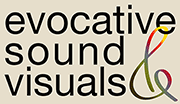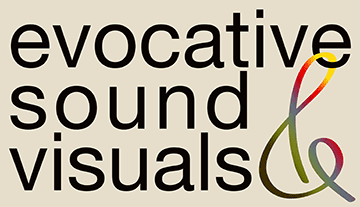Typewriters is a sound effects collection chock-full of vintage typewriters making sounds beyond the simple click-clack-clunk heard in so many TV shows and movies. I was curious if there was more to the sound of these old machines than meets the naked ear. Would recording them with high-end Barcus Berry contact microphones help bring out the best in them sonically? After recording 20 typewriters for this library, and performing a variety of keystrokes and actions on each in isolation, I can definitively say, yes.
Included are standard, portable and ultraportable machines from the early 20th century to the mid-1970s. Each machine, metal or plastic, emits almost musical sounds. These files can enhance your next sound design project in nuanced ways that exceed the usual clickity-clack-clunk-thwack-smack we associate with typewriters. You’ll get a variety of zips, rips, twangs, growls, bounces, snaps, zings, rings and dainty end-of-line warning bell dings.
Listen to a Preview
Note: In the preview above, I’m bumping sound against sound. In the library, I let these sounds – springs, levers, latches, knobs, buttons, keys, etc. – ring out and fade until their natural end. You’ll also hear the faint sound of a babbling brook below the preview. Don’t worry, this is not part of the sound files you purchase.
I used two high-end Barcus Berry contact microphones placed opposite one another to record each machine, searching out the best locations to pick up the most evocative and intriguing sounds. With a few of the machines, I used ‘regular’ microphones, a pair of Line Audio CM3s in XY in addition to the contact mics. This is noted in the file’s description field.
Whenever possible, depending on a typewriter’s functionality, I attempted to perform the same task on each machine. For instance, I typed with spaces, pauses and punctuations, across the platen until the machine’s end-of-line warning bell rang. I followed this up by grabbing the line advance lever – those chrome arms on the left side, and racking the carriage back to its left margin. I thumbed the spacebar from left to right and depressed the backspace key from right to left. By the way, holding down the spacebar of an IBM Selectric sounds a lot like a futuristic rapid-fire machine gun, without all the bullets and blood. I scrolled and rolled platen knobs. I grabbed and yanked the paper out of each machine. This makes for fulfilling zip sounds.
Most every sound has a relatively long decay. Springs, bells, metal pieces, and parts all rattling, vibrating and moving back and forth. Here lies the beauty of contact mics. You’re not going to hear some of these delicate sounds with regular microphones. I looped sounds when possible, thereby expanding the library’s possibilities. If a sound was repetitive I took it out. Too boring, gone. I didn’t record the sound of every letter or key on every typewriter. But for clarity, I do make a note in the file name of what letters I did record. Larger typewriters yielded deeper tones. No surprise there.
Typewriter Library Specifics
- 20 typewriters
- 277 files (in stereo and mono) of typing, warning bells, key strikes and mechanical things like knobs, rollers, switches and levers
- 1.38 gigabytes
- lovingly created and meticulously mastered with nice, long fades
- looped files when possible
- metadata included, created in Soundly
- UCS compliant
- All sounds were captured with a Sound Devices 702 recorder (96kHz/24bit), and unless otherwise noted in the file description, a pair of Barcus Berry contact microphones and their well-matched 4000XL piezo preamps. Line Audio CM3 microphones in both mono and XY were used for a select few machines.
Typewriters Recorded for this Library
Typewriter sizes can be broken down into three categories. The largest are referred to as standards. These are the heavy kind that would look right at home on the desk of any newsroom reporter, their worn-out brown fedora hanging off the carriage return lever. Then there are portables. You’d find these in smoky newsrooms and Manhattan advertising firms as well, but they were equally adept inside college dorm rooms, grease-covered automotive repair shops, or, as was the case with the 1938 Corona Standard I captured, a haberdashery in Cleveland, Ohio. Lastly, ultraportables. These are fun little machines. The laptops of their day. If you were part of the jet-set, you’d be toting one of these, or rather your secretary would, across the tarmac to your awaiting TWA Boeing 707.
Aztec 14
A plastic-fantastic machine made in USSR-occupied Germany in 1963. This thing was so disgustedly yellowed with cigarette tar when I got it that she went straight to the kitchen counter. I imagine a spy used it until the Berlin Wall came down.
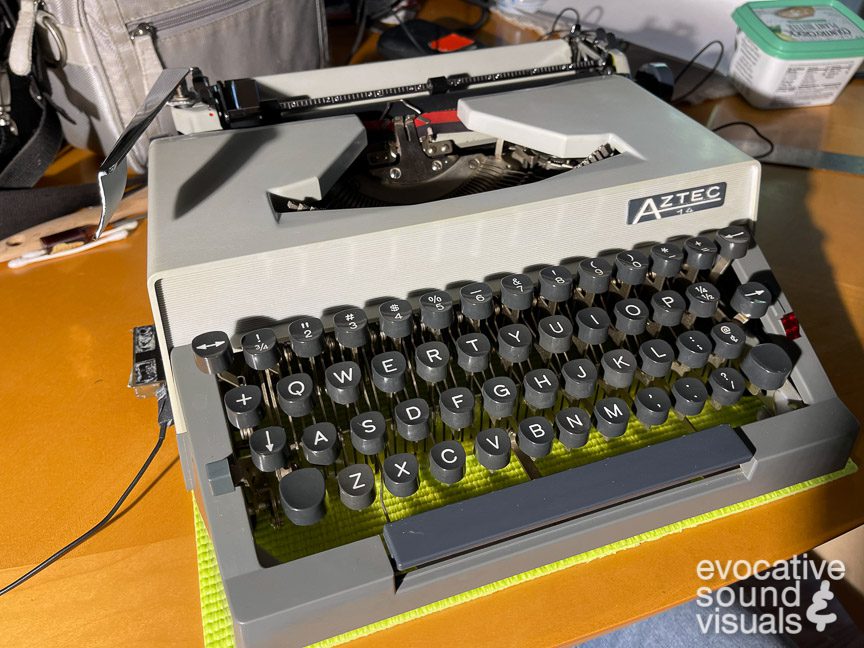
Corona 3 Folding
Made in the USA, this tiny portable first appeared for sale in 1912. Many of these were used on WWI battlefields. Perhaps this one was too.
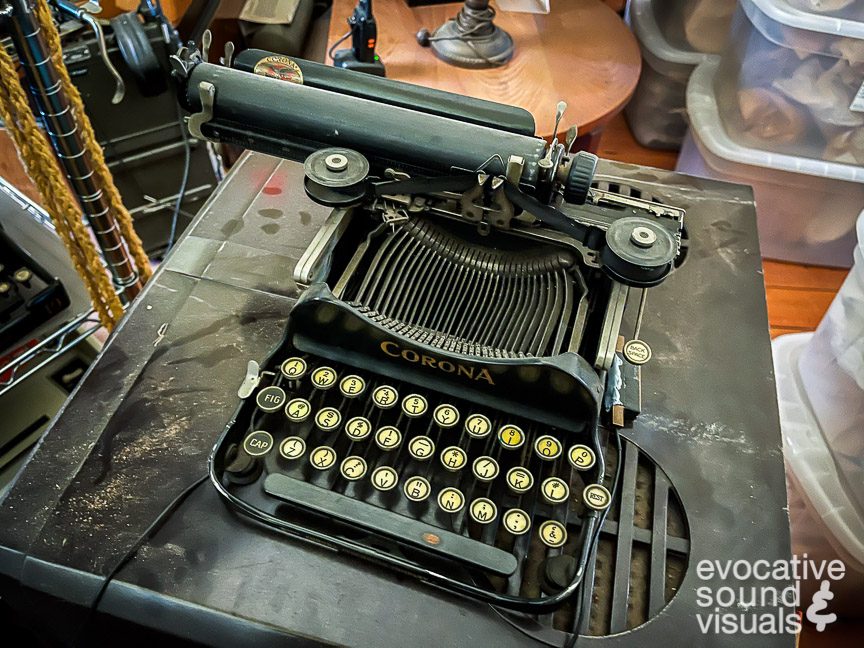
Corona Standard
USA made in 1938. I purchased this out of a garage from a guy in Cleveland who said it belonged to his father, a haberdashery owner, who had recently passed. All glossy and black, this curvy machine is downright beautiful and coveted by collectors. However, as much as I try, I can’t get it to advance beyond one space. So it sits on display, like a fine vintage sports car up on blocks.
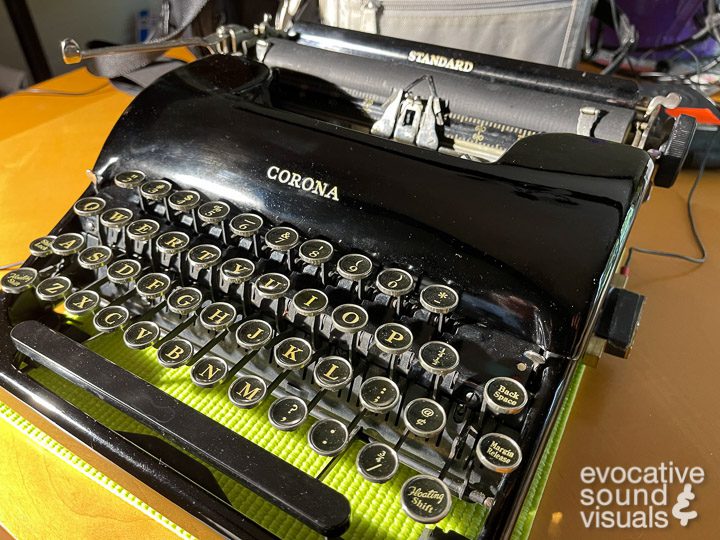
Hammond
I’m not sure of its age. Say early 1900s. This site offers clues. The thrift store I recorded this at wanted $950. Luckily, I got to record it for free. I think they’ll need to lower their price.
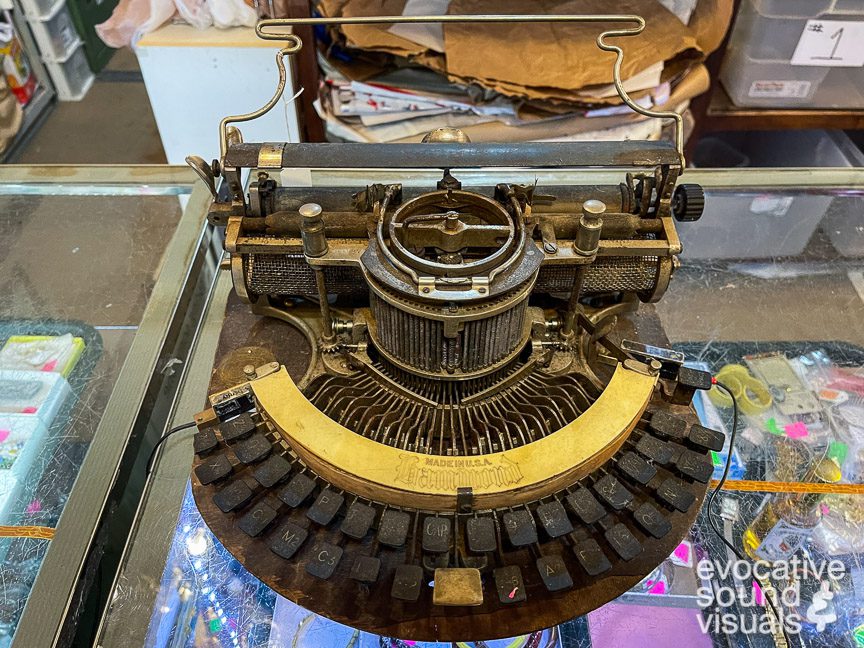
IBM Selectric II
USA-made in 1973, the IBM Selectric II, with its silver golf-ball-shaped interchangeable type heads, changed the way offices looked and secretaries typed up until the modern desktop computer age.
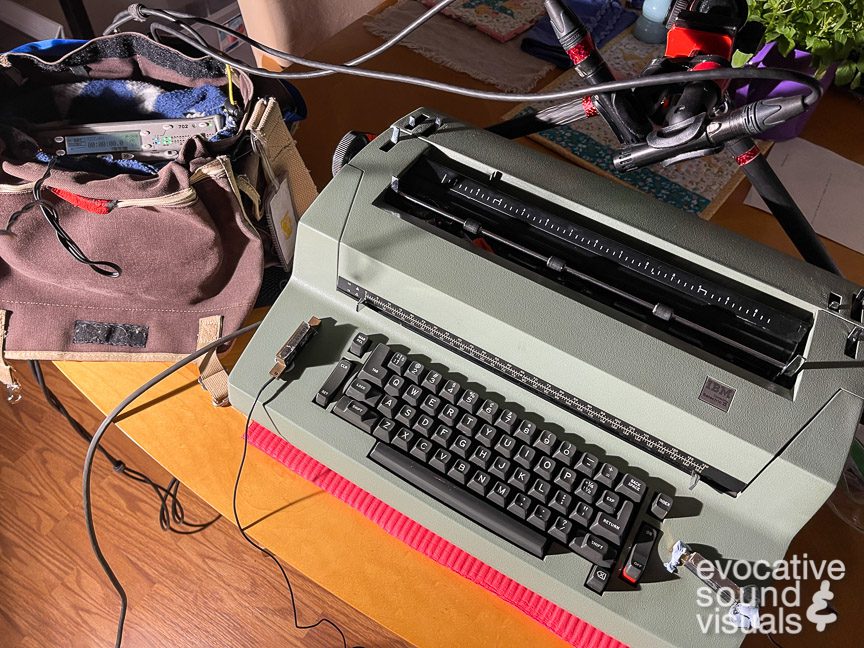
Oliver Number 5
A ‘batwing,’ model. It first appeared on the market in 1908. Sadly, this typewriter looks cooler than it types. Collector Jett Morton maintains a really interesting site dedicated to just these machines.
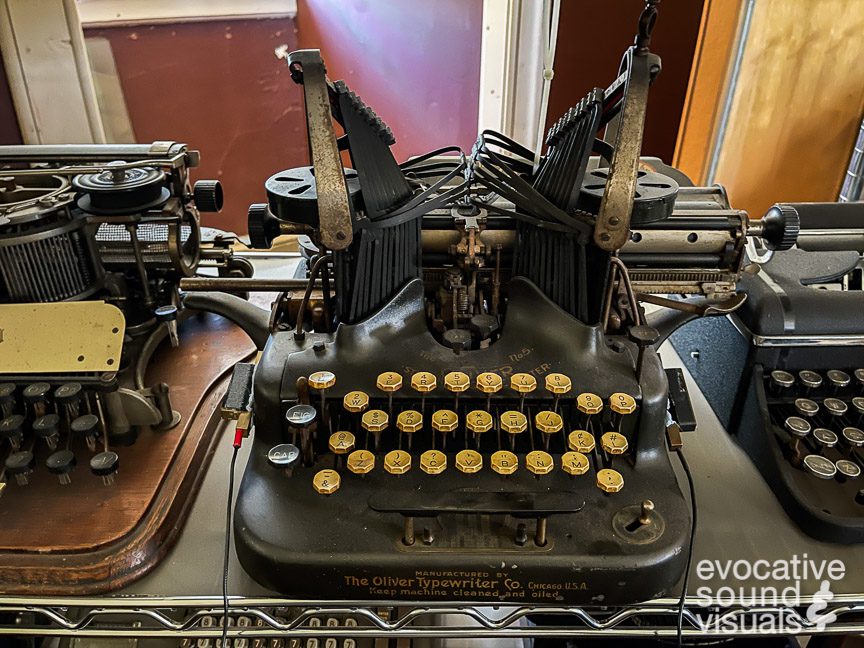
Olympia Traveller
A German-made typewriter from 1974. It is an excellent ultraportable with a carriage return growl that’ll make your neck hairs stand on end. This website helped me to get my machine up and running to record.
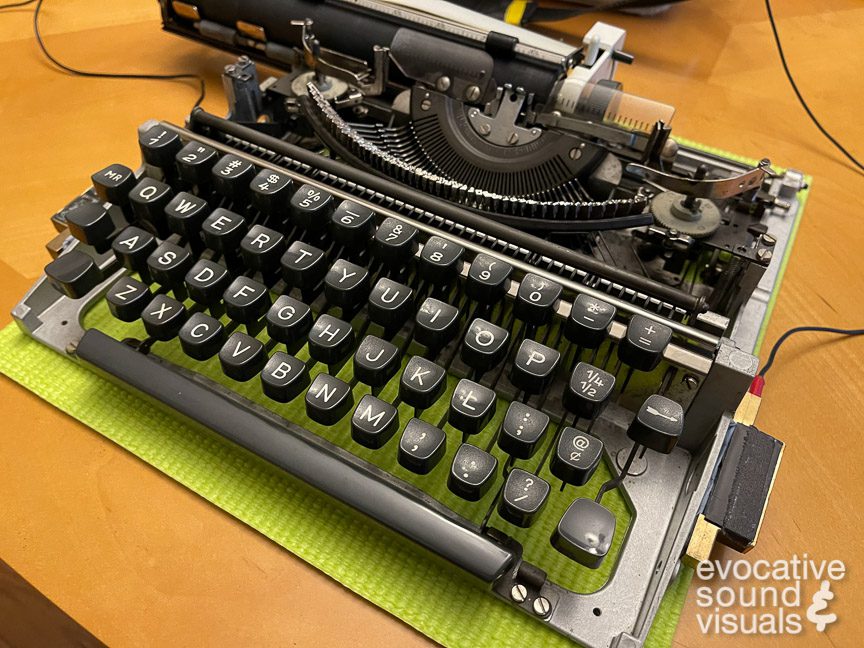
Remington KMC
American-made standard typewriter made in 1947. When I began typing on this, I realized why my father preferred these standard beasts.
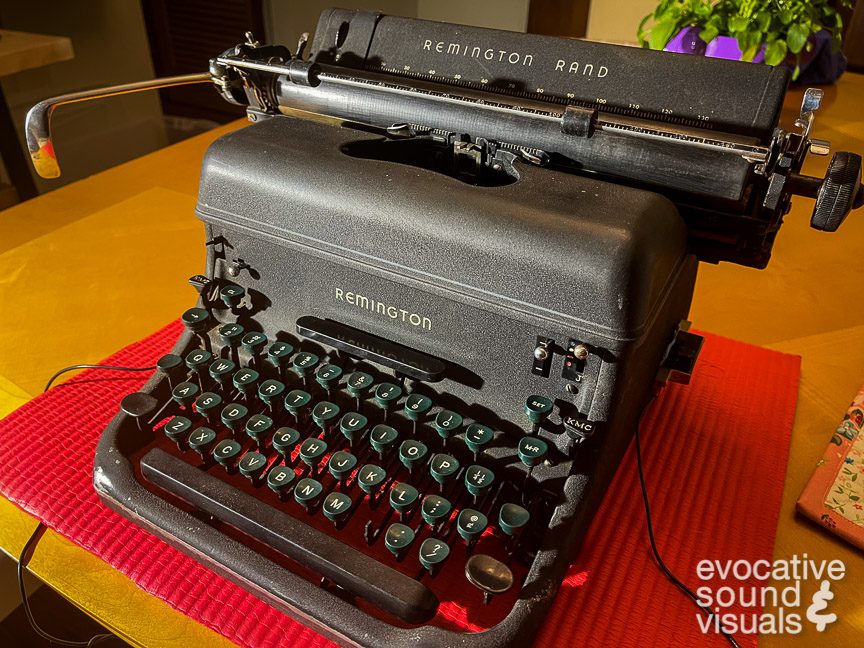
Remington Standard Number 12
Made in the USA. It first appeared for sale in 1922.
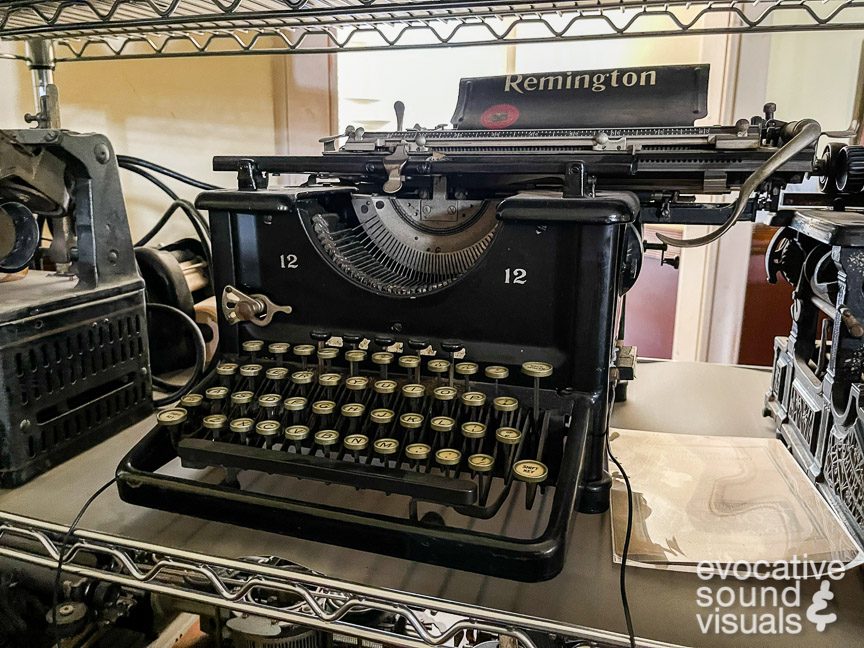
Royal Companion
An American-made portable was built in 1941. This one was a rust bucket when I got it out of the trunk of a car in Canton, Ohio.
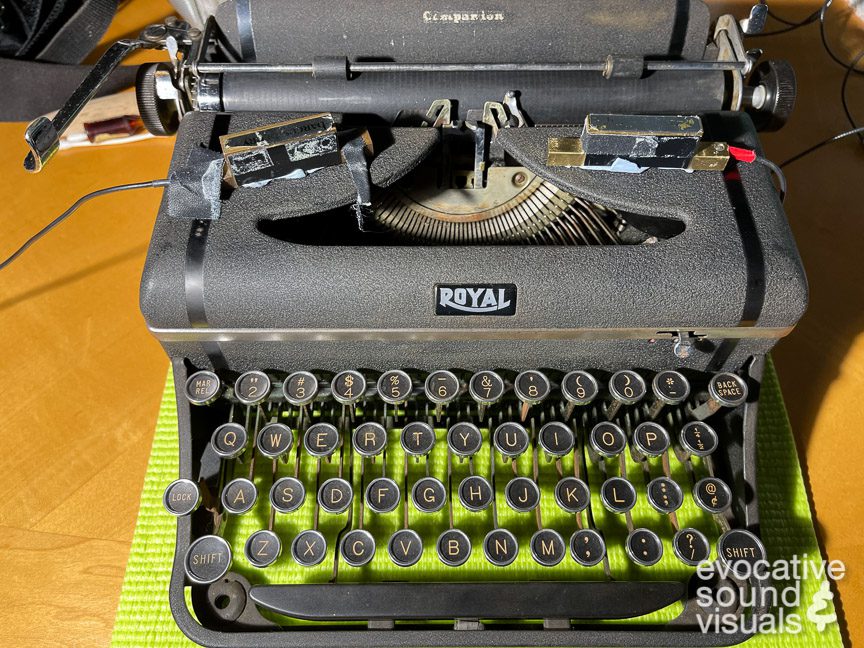
Royal Quiet DeLuxe
Made in Hartford, Connecticut in 1951. This is my new favorite typer. It’s a 12-characters-per-inch (CPI) little beauty with beautiful chrome winged accents around the ribbon selector knobs. I imagine someone stood up in a smoky, wood-clad Royal boardroom one fine Connecticut morning and exclaimed, “Let’s put chrome wings on the front of these!” In two years, those wings flew away, with excess production costs, no doubt.
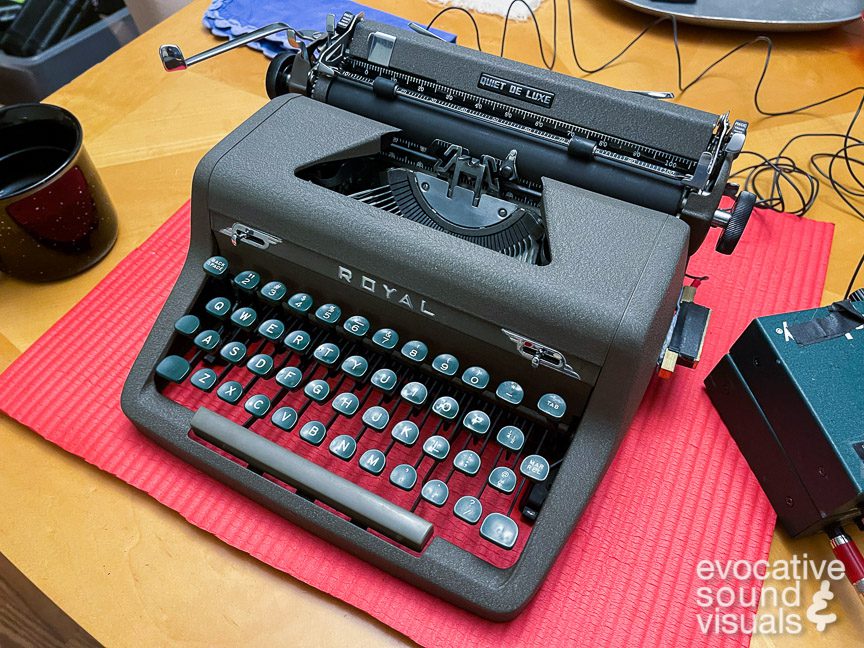
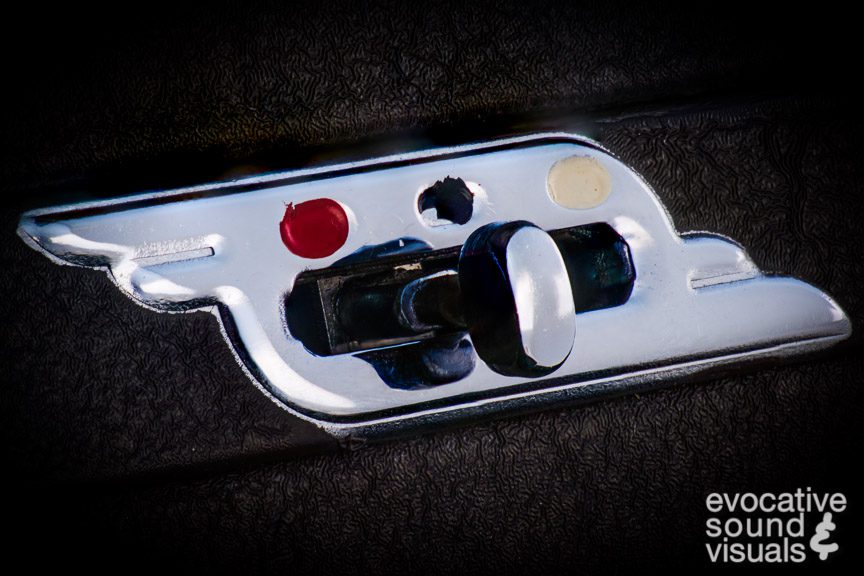
Royal Safari II
Made in Portugal in the early 80s. Like the Aztek above, this typewriter features a plastic shell (mask being the preferred term). It’s not a great typer and cost me all of $2. But it sounds interesting nonetheless.
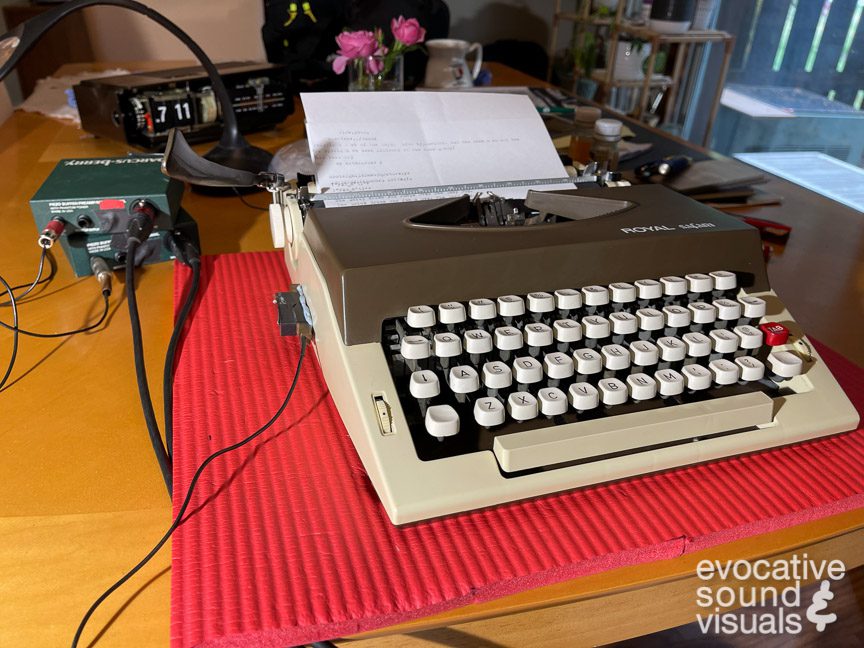
Smith-Corona Galaxie
Made in America in 1959, the first year of this model. Watch this clip from Breakfast at Tiffany’s. Audrey Hepburn is eyeing one of these, only in red.
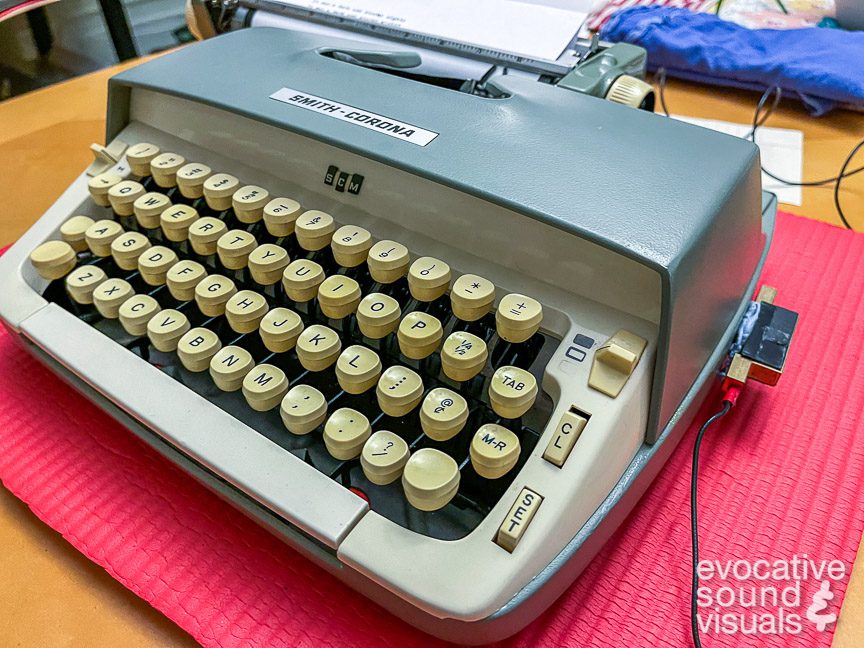
Smith-Corona Silent
USA-made in 1953, one of their 5 Series models. It’s a great portable that needed minimal care and feeding to get it to type. Contrary to its name, it’s not silent. Just like the Royal Quiet Deluxe is not particularly quiet. For recording purposes, that’s a good thing. Notice I put a thick red foam yoga mat down below most of these machines. This helped prevent any wood table sound from seeping into the recordings.
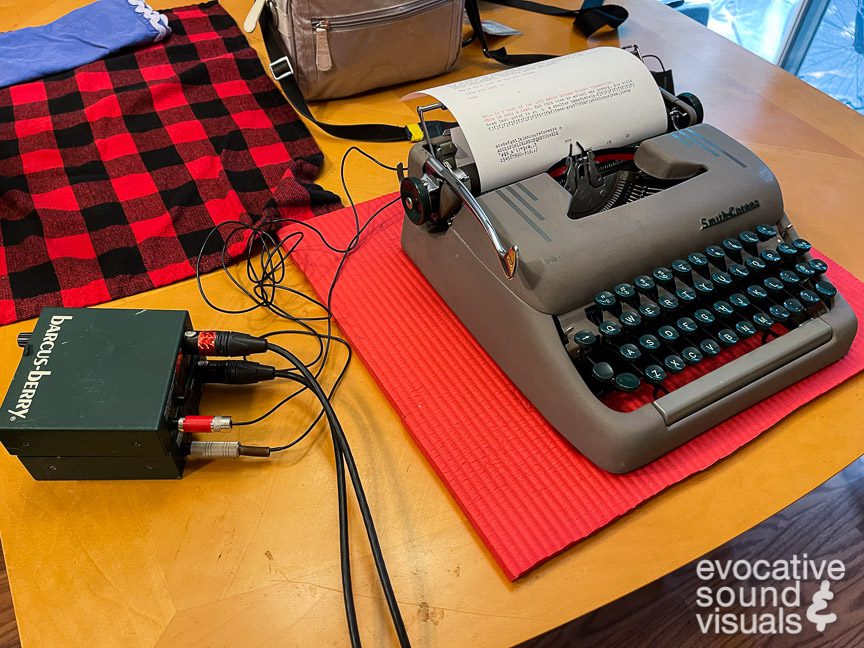
Smith-Corona Skyriter
A Syracuse, New York-made 7.5-pound ultraportable machine built in 1957. I rescued this one from an unproductive life as a porch display in Decatur, Alabama. A spider came crawling out of it when I opened its shipping box. It emits an annoyingly cute squeak every time you press down on the shift key. Instead of oiling it to make that noise go away, I think I’m going to leave it be. It also has the most delicate, dainty warning bell you’ll ever hear.
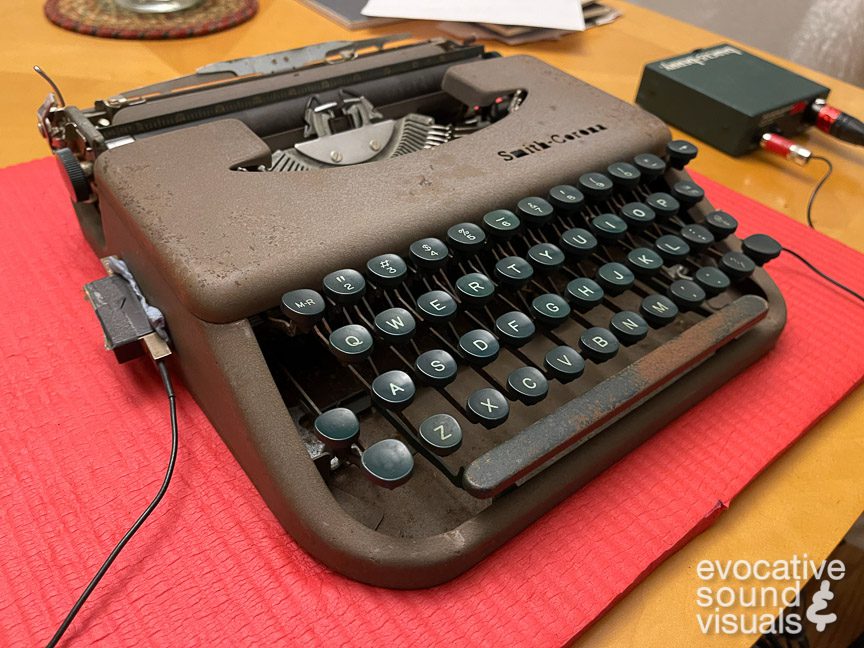
Smith-Corona Sterling
Once again, USA-made. This one is from 1953. A workhorse surpassed only by the Silent model above.
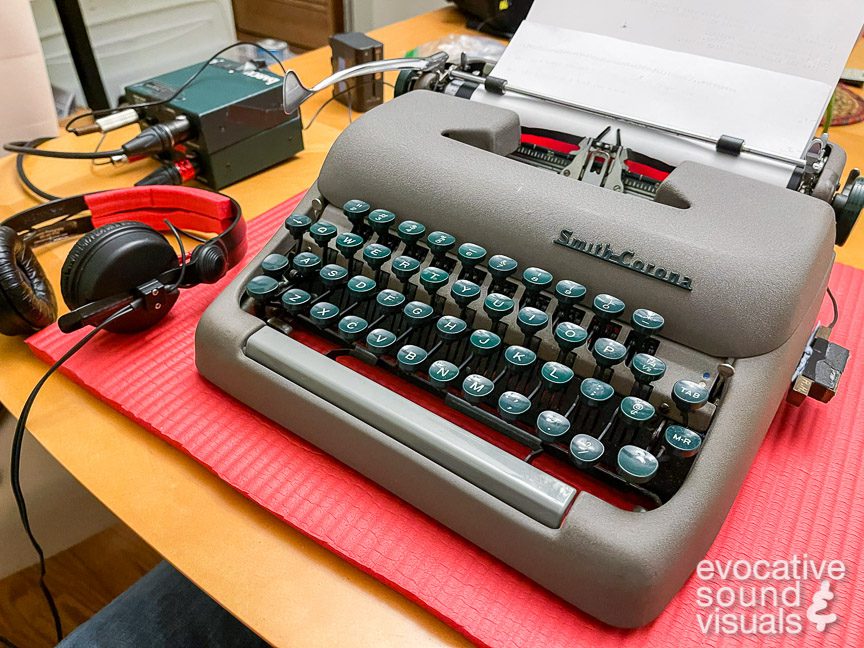
Tower Quiet-Tabulator
This is a re-branded Smith-Corona Silent, made around 1956. Tower was a Sears department store brand. I re-painted it, as it was in terrible shape and smelled like gasoline. Even though the Silent and this are basically the same machine, they both sound different from one another.
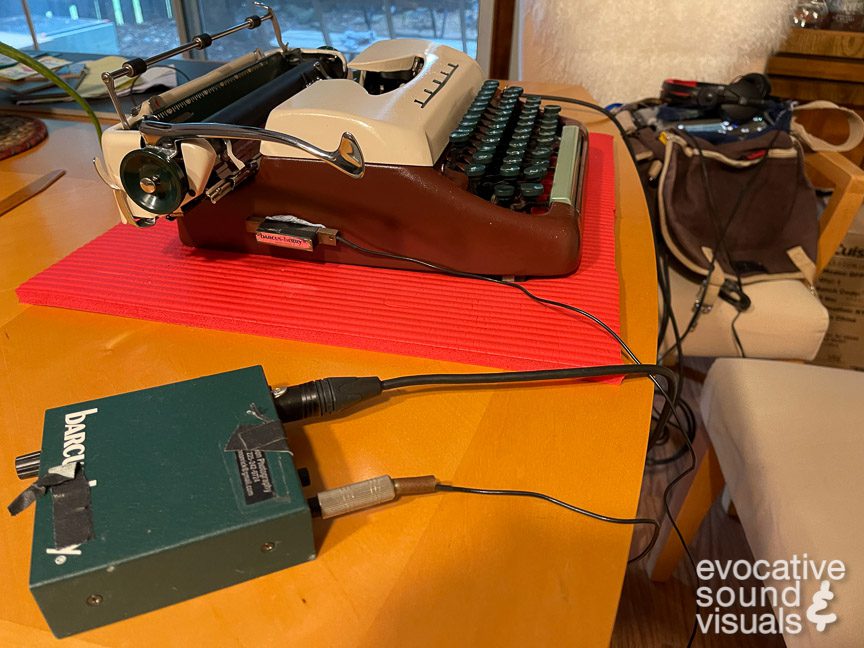
Underwood Olivetti Lettera 22
Italian-made and for sale beginning in 1953. As this was in a museum, I didn’t get to spend nearly the time I wanted to with it.
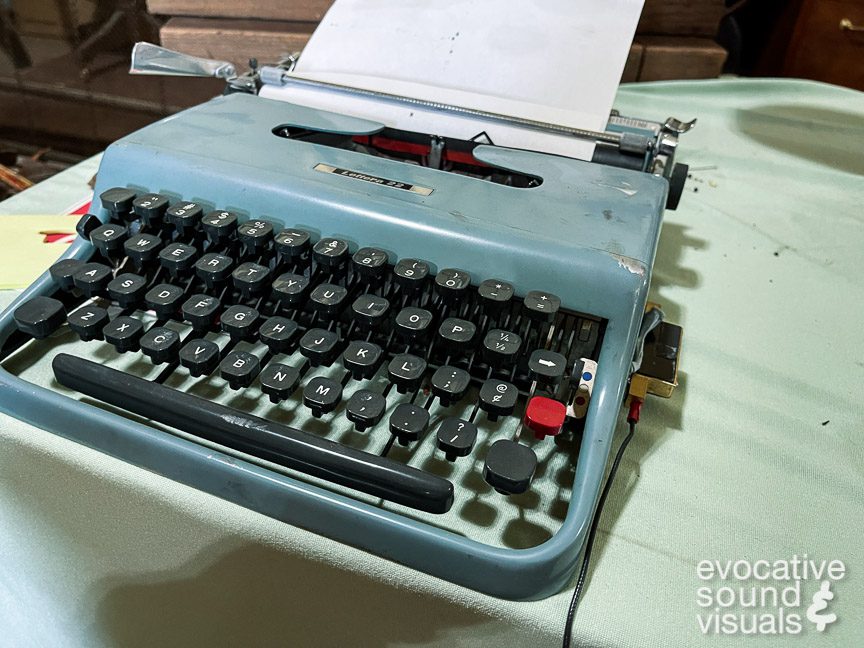
Underwood Rhythm Touch
Made in America in 1949. A heavy beast of a machine with awesome chrome Art Deco-style accents that wrap around it for everyone in front of your desk to admire. Like all the standards I recorded, this has a deeper ‘voice’ than the portables or ultraportables.
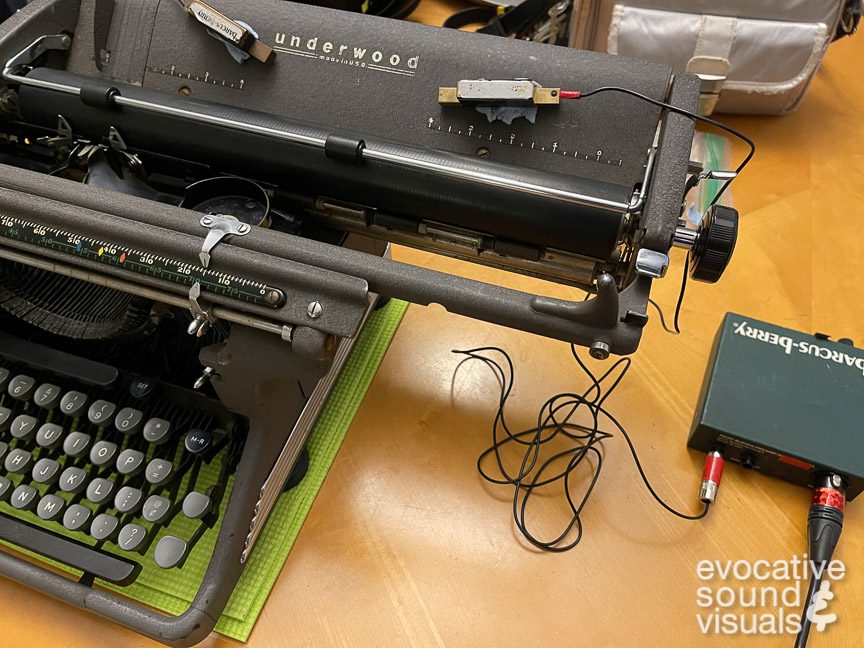
Underwood Standard Number 5
I’m not sure how old this American-made typer is. It, like a few more above, was recorded at a museum. Consequently, I didn’t have much time to spend on each to look for serial numbers. Richard Polt’s well-maintained site hosted by Xavier University lists the Number 5 as produced between 1900 and 1931. A great run for that machine. The company got gobbled up by Olivetti in the late ‘50s.
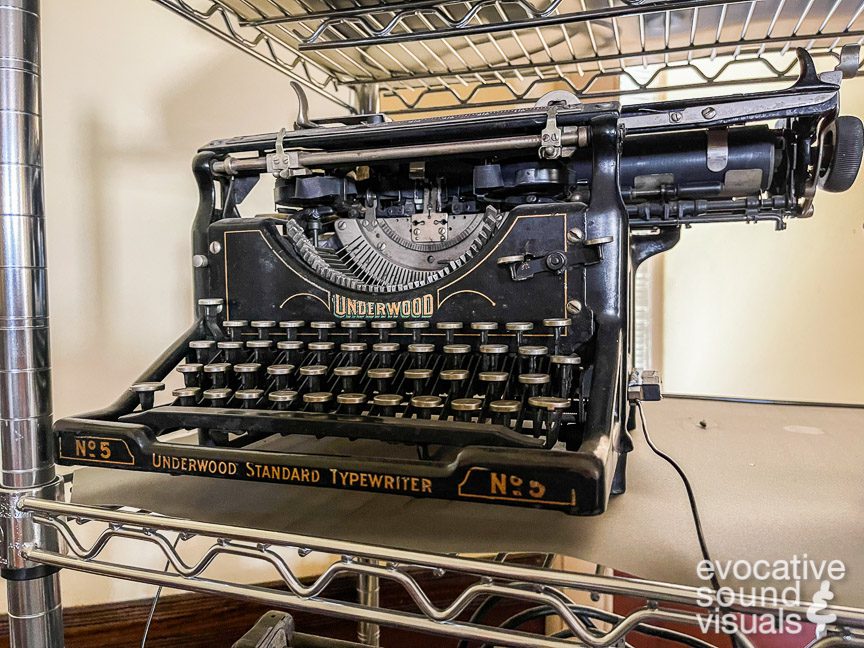
Why Create This Library?
Earlier this year, my wife and I sat down to watch California Typewriter, a 2016 documentary that artfully examines the glory days of typewriters. This was a time when they were metal, manual and permanent fixtures of office life. Admittedly, we are seven years late to the party. The enthusiasm for these old machines expressed by the interviewees, including collectors Tom Hanks, Martin Howard, Richard Polt, writers David McCullough and Sam Shepard, and others, is contagious.
So, of course, I recalled my days of working with typewriters. As a kid, I would purposely jam together the typebars on my father’s big, black L.C. Smith standard he kept at the ready to fill out business reports in his basement office. In high school, I took a couple of typing courses that have served me well to this day. We used, if memory serves, white Olympia SM9s, just like in All the President’s Men. In college, I used a gray plastic wedge-shaped Smith Corona. A modern marvel at the time, it featured a white correction ribbon I used extensively. Now, it seems, it’s a machine no self-respecting collector would be caught dead with.
I’ve convinced my wife to movie nights featuring films that contain typewriters somewhere in their plot. In no particular order, here are some of the movies and shows I’ve watched:
- Citizen Kane (1941) and All the President’s Men (1976) are mandatory journalists viewing. I’ve obliged many times over through the years.
- The Shining (1980), of course, with its “All work and no play makes Jack a dull boy” typed over and over again on a German Alder Tippa S.
- My wife introduced me to His Girl Friday (1940), another newsroom-based movie. Why I’d never seen that before is beyond me.
- The Post (2017), newspapers, again. A Man Called Otto (2022). Tom Hanks stars in both. Manual typewriters are never far from his side.
- The Typewriter (In the 21st Century) (2012), another documentary preceding California Typewriter, is pretty good, too.
- The Talented Mr. Ripley (1999) features an awesome-looking Olivetti Lettera 22 (which can be heard in this library). I want one. Anybody?
- Atonement (2007), creatively uses a typewriter’s sound as a key instrument in the soundtrack.
- Misery (1990), is based on Stephen King’s novel. It’s gratifying to see a banged-up James Caan throw a heavy standard Royal Number 10 down upon the sadistic Kathy Bates. The typewriter is the third main character in the film.
- Jagged Edge (1985), with Jeff Bridges. I remember going to the theater to see this murder mystery. I seem to recall it was a lot more suspenseful when I was younger. Sadly, you have to wait until the end to see what model typewriter Bridges used throughout the film to write, “He is innocent,” with the letter T misaligned. I’ll tell you now, it’s a shiny black vintage four-bank ’42 Corona. I knew he was guilty from the get-go. He should have sent his typewriter to the repairman.
- Currently, I’m watching World on Fire, a 2019 TV series on PBS and Manhattan (2014-2015). I’ve spotted a few well-placed vintage machines amidst all the Nazi atrocities and A-Bomb making.
More Links of Interest
- From what I can tell, the International Movie Database (IMDB) lists 1,458 movies that feature typewriters. You could spend days watching all these trailers. I have not.
- One movie I’d like to see next is Naked Lunch (1991). It is based on the 1959 novel by William S. Burroughs.
- Watch a quick video featuring author David McCollugh talking about his beloved standard Royal typewriter.
- Here’s the scene from The Shining where Shelley Duvall discovers what her husband’s been up to all winter long in a giant, abandoned hotel filled with creepy ghosts.
- Here is more info about the typewriter in Jagged Edge. Watch the movie in its entirety here. I don’t know why this is free on the internet, but for now, here you go.
- Above, I mention yanking paper from the typewriter carriage and the awesome zzzzzzzzzip sound it makes which is distinctive to every machine I recorded. If you’ve ever watched reruns of the A-Team or the Rockford Files through until the ending credits, you’ve seen this move. The show’s creator, Stephen J. Cannell, can be seen removing the paper out of his typewriter in a most flamboyant fashion, and then watching it float to the floor. This morphs into his production company logo. Pretty cool actually. The Simpson’s Itchy & Scratchy Productions paid homage to this. You won’t hear the zip, but you should. With this sound effects library, now you can.
- Collector and author Richard Polt maintains the Classic Typewriter Page, hosted by Xavier University in Cincinnati, Ohio. He has compiled an extensive list of famous wordsmiths and the machines they used. Plus, there’s a huge amount of other well-researched typewriter-related topics.
- OzTypewriter, curated by Robert Messenger of Australia, will send you into a world of wonderfully written stories about vintage typewriters.
- Ted Munk maintains the Typewriter Database. Have a question about a typewriter found in your grandparent’s attic? Look for its serial number and go here. There’s a good chance a contributor has photographed one just like it. Yet Munk admits the site is a ‘living document,’ far from complete.
Thank You Goes Out To…
A big standard-size shout out to friends (Geoff, Brian and Denise) who have graciously loaned or given me typewriters to record. Also, I appreciate the generosity of the Bedford, Ohio Historical Society. They possess a treasure trove of vintage machines that were aching to be taken off their shelves and used again, if only for a few moments. I could spend hours in that space. And to members of the typewriter Facebook groups I belong to. Many members have graciously and without judgment answered my newbie questions on how to restore and repair many of the typewriters used for this library. I didn’t get to know these machines inside and out without their invaluable knowledge and help.
